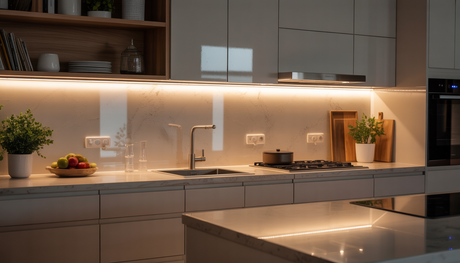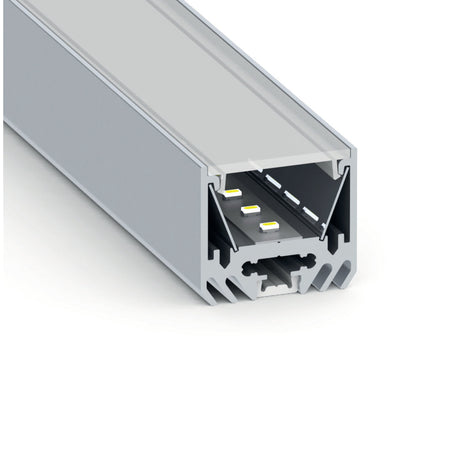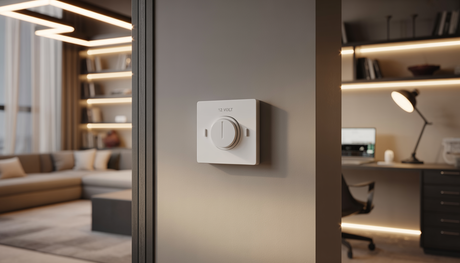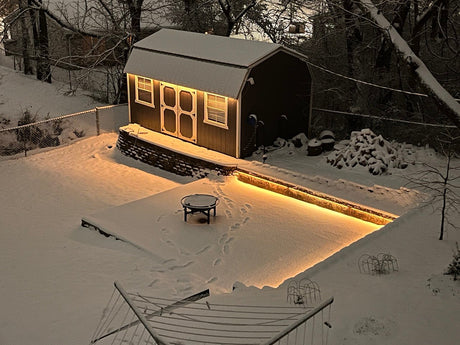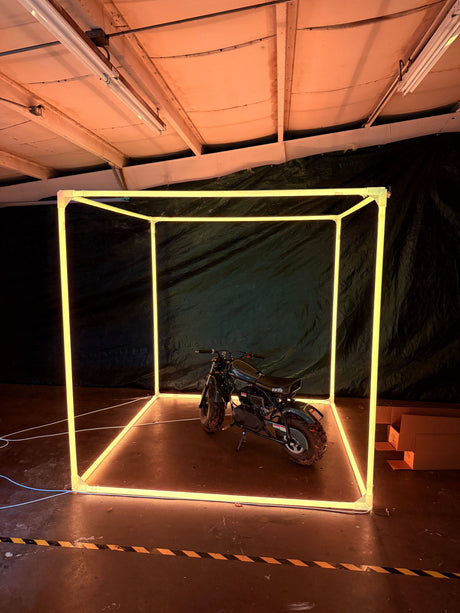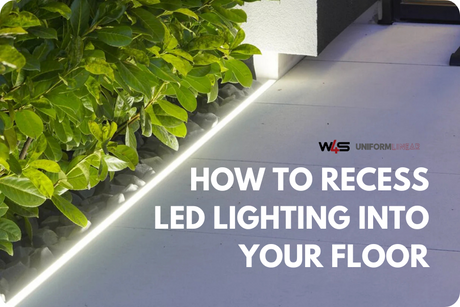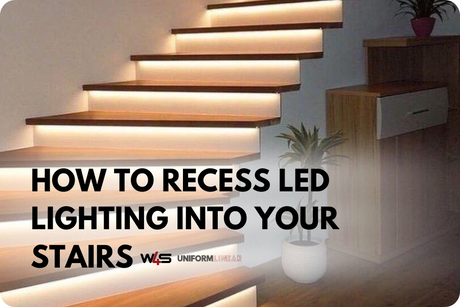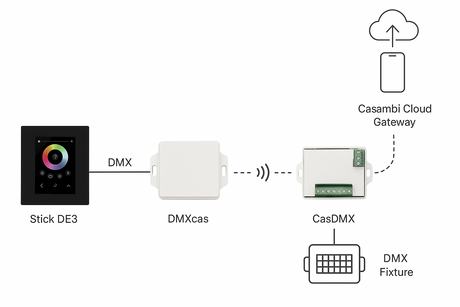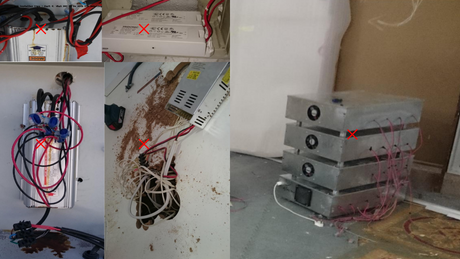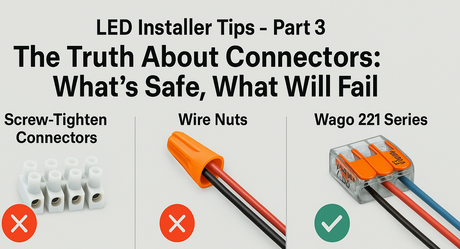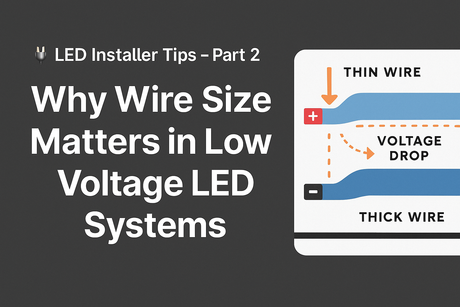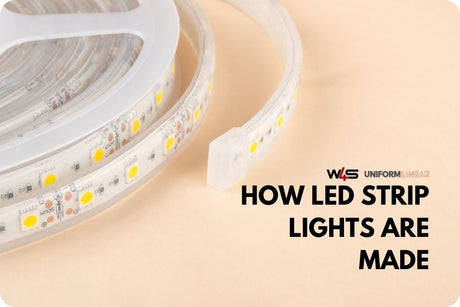Lighting can change the entire feel of a space. The right LED dimmer helps you set the mood, save energy, and extend the life of your lights. But choosing the wrong one can cause flickering, buzzing, or even damage your LEDs.
An LED dimmer isn’t just for indoor rooms. It can enhance lighting in various settings, including RVs, outdoor patios, workspaces, and even under-cabinet areas in kitchens. If you're adjusting brightness in a cozy bedroom or controlling outdoor ambiance for an evening gathering, the right dimmer makes a big difference.
There are different types of dimmers, each designed to control light output in specific ways. Some work best with LED light fixtures, while others require special wiring or drivers. Not all dimmers are compatible with every LED bulb, so understanding these differences helps you avoid issues and ensures smooth, hassle-free dimming.
This guide will help you find the best LED dimmer for your setup. You’ll learn about compatibility, dimming performance, and how to maximize efficiency across different lighting applications.
Understanding LED Dimmers and Their Benefits

LED dimmers control brightness by adjusting voltage or pulse frequency. Unlike traditional incandescent dimmers, which reduce power by cutting voltage, LED dimmers must match the specific technology of LED drivers.
Using a compatible dimmer prevents issues like flickering or uneven dimming. It also improves energy efficiency, reducing electricity consumption without affecting performance.
Another advantage of LED dimmers is their ability to enhance ambiance. Whether you need bright task lighting or a soft glow for relaxation, an adjustable dimmer lets you create the perfect lighting environment.
Benefits of LED Dimmers
Energy Savings
Lowering the brightness of your LED lights helps cut energy consumption. You don’t always need full brightness. Watching a movie? Winding down for the night? A dimmer lets you use only the power you need.
This small change can lead to noticeable savings on your electricity bill. If you're in an RV or off-grid setup, dimming your lights also helps conserve battery life. That means you can keep your lights on longer without draining power too quickly.
Adjustable Ambiance
Ever walked into a room that felt too bright or too dim? The right lighting makes a huge difference.
An LED dimmer lets you control the brightness to match any situation. Hosting a dinner party? Lower the lights for a warm, inviting glow. Need to focus on work? Turn them up for better visibility.
If you’re reading, relaxing, or setting the mood for a cozy night, dimmable lighting helps you create the perfect atmosphere.
Extended LED Lifespan
LEDs last a long time, but dimming them makes them last even longer.
Running lights at full brightness all the time generates more heat. Over time, this extra heat can wear out your LEDs. By dimming them, you reduce heat buildup and extend their lifespan.
This means fewer replacements, less hassle, and more money saved. A simple dimmer can help keep your LEDs in top shape for years.
With an LED dimmer, you get more than just adjustable brightness. You save energy, create the perfect ambiance, and make your LEDs last longer.
Types of LED Dimmers
Not all dimmers work the same way. Choosing the right one depends on your LED setup and how much control you want over your lighting. Some dimmers offer simple brightness control. Others provide advanced smart features for automation.
0-10V Dimmers
If you've been in a commercial building with smooth, flicker-free dimming, it likely used a 0-10V dimmer. This type of dimmer sends a low-voltage signal (between 0 and 10 volts) to the LED driver.
A 0V signal turns the light off. A 10V signal sets it to full brightness.
These dimmers work well for large spaces like warehouses, offices, and retail stores. But they can also be useful in homes and RVs with compatible LED drivers.
If you want reliable and gradual dimming, a 0-10V LED dimmer is a solid choice.
PWM (Pulse Width Modulation) Dimmers
If you use LED strip lights in your RV, under cabinets, or along ceilings, a PWM dimmer is a great option. This dimmer rapidly turns the LED on and off. It controls brightness without changing the color temperature.
The best part? Your eyes won’t notice the switching. Instead, you’ll see smooth dimming that lets you adjust lighting exactly how you like it.
PWM dimmers are ideal for low-voltage LED lighting. They work well for accent lighting, mood lighting, and even outdoor setups.
DALI (Digital Addressable Lighting Interface) Dimmers
For the ultimate lighting control, DALI dimmers are a top choice. These dimmers are often found in smart homes, office buildings, and high-end hotels.
With a DALI system, you can adjust multiple LED lights individually from one central control. Each light can have its own brightness setting. You can create custom lighting scenes, brighter for work, dimmer for movie nights, and softer for reading.
If you're building a smart home or upgrading office lighting, a DALI dimmer offers flexibility and precision. It’s a great option for those who want full control over their lighting.
Wi-Fi & Smart Dimmers
Want to control your lights without getting up? Wi-Fi and smart dimmers let you adjust LED brightness using an app or voice commands.
These dimmers work with smart home systems like Alexa, Google Home, and Apple HomeKit. Picture this: You're in bed, but the lights are still on. Instead of getting up, you just say, "Alexa, dim the lights." The lights adjust instantly.
Smart dimmers make lighting effortless. They are perfect for modern homes, automation lovers, and anyone who values convenience.
The right dimmer depends on how you use your lighting. Some dimmers offer smooth control for LED strips. Others provide advanced customization for smart homes.
When you need simple brightness adjustments or high-tech automation, there’s an LED dimmer that fits your needs.
Factors to Consider When Choosing an LED Dimmer

Choosing the right LED dimmer isn’t just about picking any dimmer switch. There are a few important factors to keep in mind. The wrong choice can lead to flickering, buzzing, or even damage to your LED lights.
LED Compatibility
Not all LED bulbs and strips are dimmable. Even among dimmable LEDs, different models work best with specific dimmer types.
Some LEDs are designed for traditional TRIAC dimmers. Others need 0-10V or PWM dimmers. If you pair the wrong LED with the wrong dimmer, you may get poor performance or no dimming at all.
Before buying a dimmer, always check if it’s compatible with your LED lights. Manufacturers usually list compatible dimmer types on the product packaging or website.
Wattage & Load Capacity
Every dimmer has a maximum wattage it can handle. If you exceed this limit, your lights might flicker, your dimmer could overheat, or the system could fail entirely.
To avoid this, add up the total wattage of the LEDs you plan to connect. Then, choose a dimmer with a capacity that exceeds your total wattage.
For example, if you're using ten 10W LED bulbs, your total wattage is 100W. If your dimmer is rated for only 80W, it's not strong enough. Look for a dimmer rated for at least 150W to ensure smooth operation.
A properly matched dimmer ensures stable brightness, prevents overheating, and extends the lifespan of your LED system.
Control Method
How you control your LED dimmer is just as important as its compatibility. Think about what works best for your space and lifestyle. Do you prefer a simple switch, a remote, or full smart home integration?
Manual Dimmers
If you like a straightforward approach, manual dimmers are the way to go. These are switch-based controls, often with a rotating knob, sliding switch, or push-button mechanism.
Easy to Use and Reliable
Manual dimmers are the simplest and most reliable option. Just turn the dial or slide the switch to adjust brightness instantly. There’s no need for apps, remotes, or Wi-Fi connections just direct control at your fingertips.
Affordable and Widely Available
One of the biggest advantages of manual dimmers is affordability. They cost less than smart or remote-controlled options and are widely available in hardware stores.
If you’re on a budget but still want dimmable lighting, this is a great choice.
No Wi-Fi or Batteries Required
Unlike smart dimmers, manual ones don’t rely on Wi-Fi, Bluetooth, or batteries. This means they’ll always work, even if your internet goes out. They’re perfect for those who prefer a simple, no-fuss setup.
Ideal for Small Spaces and Basic Setups
If you just need a dimmer for a single light fixture, a manual dimmer is perfect. They’re commonly used in bedrooms, living rooms, dining areas, and even RVs where high-tech features aren’t necessary.
While they may lack advanced features, manual dimmers provide reliable, hands-on control over your lighting without any extra setup.
Remote-Controlled Dimmers
If you want more convenience, remote-controlled dimmers make it easy to adjust your lighting. You can control them from anywhere in the room. These dimmers come with a handheld remote. A simple press of a button changes the brightness without getting up.
Convenient and Easy to Use
A remote-controlled dimmer saves you from walking to the switch every time. You can adjust the lighting while relaxing on the couch. It also works when you're lying in bed. Press a button, and the brightness changes instantly.
Great for Hard-to-Reach Lights
If your lights are installed in high ceilings, cabinets, or outdoor spaces, a remote-controlled dimmer is a lifesaver. You won’t need to climb a ladder or stretch to adjust the lighting—just use the remote.
No Wi-Fi Needed
Unlike smart dimmers, remote-controlled dimmers don’t rely on Wi-Fi or Bluetooth. They work with simple radio frequency (RF) or infrared (IR) signals, ensuring a stable connection without internet interference.
Multiple Control Options
Some remote dimmers allow multiple remotes to control the same lights, making them ideal for large rooms or shared spaces. If one remote is lost, a backup can still operate the lights.
Perfect for Home Theaters and Bedrooms
These dimmers are especially useful for home theaters, bedrooms, and relaxation areas. You can lower the brightness without disrupting your movie or getting out of bed at night.
Remote-controlled dimmers offer a great balance between convenience and simplicity, making them a practical choice for modern homes.
Smart Dimmers
For the ultimate in modern lighting control, smart dimmers let you adjust your lights from an app or voice assistant. They integrate seamlessly with smart home systems, offering automation and scheduling features.
Control Your Lights from Anywhere
With a smart dimmer, you can adjust brightness from your smartphone, even if you're at home or away. Forgot to turn off the lights before leaving? No problem, just open the app and switch them off remotely.
Works with Voice Assistants
Smart dimmers are compatible with Alexa, Google Home, and Apple HomeKit. Simply say, “Dim the lights to 50%,” and your lights adjust instantly. This hands-free feature is perfect for multitasking or when your hands are full.
Create Custom Lighting Scenes
With smart dimmers, you can set up custom lighting scenes for different activities. Want soft lighting for dinner? Bright lights for reading? Just save your preferred settings and activate them with a tap or voice command.
Automation and Scheduling
Smart dimmers allow you to schedule lights to turn on or off at specific times. Wake up to gradually increasing brightness or set lights to turn off automatically at bedtime. These features help save energy and enhance security.
Perfect for Whole-Home Integration
If you already have a smart home system, a smart dimmer is a seamless addition. They work with other smart devices, like motion sensors and security systems, to create a fully automated home experience.
Smart dimmers offer the most flexibility and advanced features, making them ideal for tech-savvy homeowners who want full control over their lighting.
Installation Requirements

Before choosing a dimmer, consider how much effort you’re willing to put into installation. Some dimmers are simple plug-and-play models, while others require wiring into your electrical system.
Hardwired Dimmers
These dimmers replace traditional wall switches and need to be wired directly into your electrical system. They provide a permanent and professional look but require some electrical knowledge.
If you’re not comfortable working with wiring, hiring an electrician may be the best option.
Plug-In Dimmers
Plug-in dimmers are a great option for table lamps, floor lamps, and other plug-in lights. Simply plug them into an outlet and connect your lamp to the dimmer. They’re easy to install and don’t require any wiring.
Battery-Operated Dimmers
For a completely wireless setup, battery-operated dimmers are a great choice. These dimmers can be placed anywhere and work via remote control or Bluetooth. They’re perfect for renters or anyone who wants a flexible, non-permanent option.
How to Match Your Dimmer with Your LED Driver or Transformer
Matching your dimmer with the right LED driver or transformer is essential. The wrong setup can cause flickering, overheating, or even LED failure. Many people assume any dimmer will work, but that’s not true.
When I installed LED strips in my camper, I didn’t check compatibility. The lights flickered constantly. After a few days, some sections stopped working. I used a constant current driver instead of a constant voltage one. That mistake cost me time, money, and a lot of frustration.
Related: How to choose the right LED driver
Constant Voltage Drivers
These drivers provide a stable voltage, usually 12V or 24V. They are ideal for LED strips, under-cabinet lighting, and standard LED bulbs. If your LEDs require a specific voltage, always match it with the driver.
For example, 12V LED strips need a 12V driver. A 24V driver could burn them out. A lower voltage driver might not power them at all. When I finally used the correct 12V driver, my lights worked perfectly. No flickering. No failures. Just smooth, steady brightness.
Constant Current Drivers
These drivers regulate electrical current instead of voltage. They work best for high-power LEDs, like recessed downlights and track lighting. Instead of providing a fixed voltage, they supply a steady current, measured in milliamps or amps.
If you use the wrong driver, you might run into serious issues. I once set up a home studio and paired a dimmer with the wrong driver. The lights were too bright, even at the lowest setting. Then, they started shutting off randomly. When I switched to the correct constant current driver, everything worked perfectly.
To avoid flickering, inconsistent brightness, or LED failure, always check the manufacturer’s specifications. Matching the right dimmer, driver, and LEDs will save you time, money, and frustration.
Smart LED Dimmers: Are They Worth It?
Smart dimmers bring convenience and flexibility. But are they the right choice for your setup? Let’s look at the benefits and drawbacks.
Pros of Smart LED Dimmers
One major advantage is the remote control. You can adjust your lights from anywhere using an app. Even when you're in bed or away from home, controlling your lighting is just a tap away.
Smart dimmers also integrate with voice assistants like Alexa and Google Home. Instead of reaching for a switch, you can dim the lights with a simple voice command.
Another benefit is customizable lighting schedules. You can set your lights to dim in the evening or brighten in the morning. This is great for security, energy savings, and creating the perfect atmosphere automatically.
Cons of Smart LED Dimmers
However, smart dimmers are more expensive than traditional ones. The added features come at a higher price, which may not be ideal for every budget.
They also rely on a stable Wi-Fi connection. If your internet goes down, you might lose remote access. Some models even require additional hubs, adding to the cost and complexity.
Smart dimmers offer impressive features, but they aren’t for everyone. If convenience and automation are priorities, they’re a great choice. But if you prefer simplicity, a manual dimmer may be the better option.
Installation Tips and Best Practices

Installing an LED dimmer is a simple process, but following the right steps ensures safety and functionality.
Basic Wiring Instructions
1. Turn off power at the circuit breaker.
Always cut off electricity before working with wiring. This prevents shocks and ensures a safe installation.
2. Remove the old switch and disconnect wires.
Unscrew the old switch and carefully detach the wires. Take a picture before disconnecting to remember the wiring setup.
3. Connect the new dimmer, following the wiring diagram.
Most dimmers come with clear instructions. Match the wires correctly typically, black for live, white for neutral, and green for ground.
4. Secure the dimmer in place and attach the faceplate.
Once connected, carefully tuck the wires back into the wall box. Secure the dimmer with screws and snap the faceplate in place.
5. Restore power and test the dimmer.
Turn the power back on and test your dimmer. Adjust the brightness and check for any flickering or unresponsive lights.
Common Mistakes to Avoid
1. Using a non-dimmable LED with a dimmer.
Not all LEDs work with dimmers. Using a non-dimmable LED can cause flickering, buzzing, or failure. Always check labels before installing.
2. Overloading the dimmer’s wattage capacity.
Every dimmer has a maximum wattage limit. Exceeding this can lead to overheating or dimmer failure. Make sure your total LED wattage stays within the dimmer’s rated capacity.
3. Skipping compatibility checks between the dimmer and LED driver.
Some dimmers only work with specific LED drivers. Mismatched components can result in poor performance. Always verify compatibility before installation.
4. Improper wiring, leading to flickering or no dimming function.
Incorrect connections can cause issues like flickering, unresponsive dimming, or power loss. Double-check the wiring and follow the manufacturer’s guide carefully.
Taking the time to install your dimmer correctly ensures smooth operation and extends the life of your LEDs.
FAQs About Choosing an LED Dimmer
What happens if you use the wrong dimmer with LED lights?
Using an incompatible dimmer can cause flickering, buzzing, or uneven dimming. In some cases, the LEDs may not turn on at all. Over time, using the wrong dimmer can also reduce the lifespan of your LED lights.
How do you size LED dimmers?
To size your dimmer, add up the total wattage of all LEDs. Choose a dimmer with a higher wattage rating. For example, five 10W LEDs (50W total) need a dimmer rated for at least 100W.
Do I need a special dimmer for LED lights?
Yes, LED lights require compatible dimmers. Traditional dimmers designed for incandescent bulbs may not work properly with LEDs. Look for dimmers labeled “LED-compatible” or “trailing-edge” to ensure smooth dimming.
How do I know if my dimmer switch is compatible with LED?
Check the manufacturer’s specifications for both the LED light and the dimmer. Many LED dimmers list compatible bulb types. If you're unsure, test a single LED bulb with the dimmer before installing multiple fixtures.





